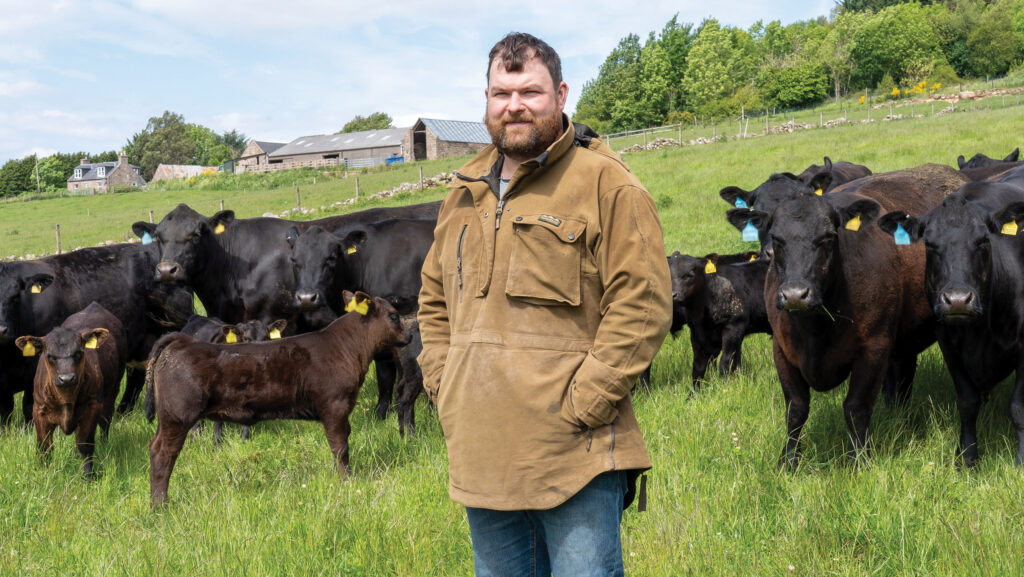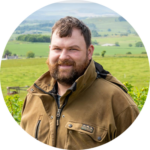Farmer Focus: Why I have a low-cost focus for sucklers
 © Angus Findlay
© Angus Findlay As this is my first Farmer Focus contribution, I had best introduce myself a little. We operate across three units, split between owned, tenanted and seasonal lets.
My wife Claire and I run about 240 sucklers, with a third sold store, a third finished, and the rest either sold as breeding heifers and bulls, or retained to breed ourselves.
We run both Aberdeen Angus and Stabiliser pedigree cattle with about 50 cows leased. We also have a very small but expanding flock of Lleyn-cross ewes, and an agricultural stock fencing business on the side.
See also: How cow leasing helped grow suckler business
I’m a fourth-generation farmer with a first-generation business, which started in 2016.
As a result, it has always had to be low-cost. We run a low-input, forage-based system, with all breeding stock outwintered on deferred grass, bale grazing or forage crops
We have been a QMS Monitor Farm since 2022, which has been a great experience so far.
I have always really enjoyed attending farm visits, meeting up with like-minded folk and learning about how others farm.
Of course, it’s a different type of experience when you are hosting, having people analysing what you do and why.
Once you get over the initial fear of being interrogated, it is a very useful exercise having so many minds brainstorming positive ideas on how to improve your business – and their own.
This summer, we are trialling something new: finishing bulls at grass with a little concentrate, following a period of compensatory growth. It will be interesting to see how it stacks up against intensive systems, or finishing as steers.
Initial calculations using Farmax suggested an improvement in gross margin. However, the challenge is to make it work in practice, not just on paper.
We recently held our summer monitor farm meeting on “Finishing and Forage”, where we listened to some brilliant speakers on all things finishing and visitors got a chance to see our system.
We can finally take a short breather now that we are finished artificial insemination. Bulls are now out working and bale grazing is mostly set up for winter. We are just halfway through this year, and I am already looking forward to what next year brings.

